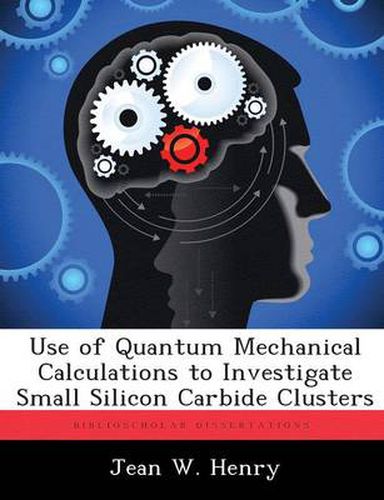Readings Newsletter
Become a Readings Member to make your shopping experience even easier.
Sign in or sign up for free!
You’re not far away from qualifying for FREE standard shipping within Australia
You’ve qualified for FREE standard shipping within Australia
The cart is loading…






This title is printed to order. This book may have been self-published. If so, we cannot guarantee the quality of the content. In the main most books will have gone through the editing process however some may not. We therefore suggest that you be aware of this before ordering this book. If in doubt check either the author or publisher’s details as we are unable to accept any returns unless they are faulty. Please contact us if you have any questions.
Silicon carbide (SiC) has a wide band gap at high temperature, a good candidate material to meet future Air Force needs for wide-band-gap semiconductor devices for optoelectronics and high power electronics in aerospace applications. Defects generated during growth and fabrication are largely responsible for degradation of SiC properties, so surface chemistry of SiC is very important in the surface fabrication and control of epitaxial SiC films. Computer simulation is an economic and efficient approach to model the surface chemistry of silicon carbide. A hybrid quantum mechanics/molecular mechanics (QM/MM) method had been proven a sufficient way to model bulk SiC surfaces. In this method a small cluster modeled by a QM method is embedded in a bulk framework that can be modeled by a MM method. The key to use the QM/MM to model silicon carbide surface chemistry is to find a QM method that can accurately model the silicon carbide clusters. Density Functional Theory (DFT) is chosen as a QM calculation method in this paper. Comparing the DFT calculation results with experimental results, the calculation results of geometry predictions, electron affinities (EA) and vibration frequencies are in good agreement with the experimental results. Sixteen optimized ground state structures were found using DFT:3BLYP method for the SimCn … system. A root mean square average EA offset of -0.1 eV is found compared with the available experimental results. The factors that affect the accuracy of electron affinity calculation are discussed. The CPU time scaling of DFT calculations in SiC systems is also discussed.
$9.00 standard shipping within Australia
FREE standard shipping within Australia for orders over $100.00
Express & International shipping calculated at checkout
Stock availability can be subject to change without notice. We recommend calling the shop or contacting our online team to check availability of low stock items. Please see our Shopping Online page for more details.
This title is printed to order. This book may have been self-published. If so, we cannot guarantee the quality of the content. In the main most books will have gone through the editing process however some may not. We therefore suggest that you be aware of this before ordering this book. If in doubt check either the author or publisher’s details as we are unable to accept any returns unless they are faulty. Please contact us if you have any questions.
Silicon carbide (SiC) has a wide band gap at high temperature, a good candidate material to meet future Air Force needs for wide-band-gap semiconductor devices for optoelectronics and high power electronics in aerospace applications. Defects generated during growth and fabrication are largely responsible for degradation of SiC properties, so surface chemistry of SiC is very important in the surface fabrication and control of epitaxial SiC films. Computer simulation is an economic and efficient approach to model the surface chemistry of silicon carbide. A hybrid quantum mechanics/molecular mechanics (QM/MM) method had been proven a sufficient way to model bulk SiC surfaces. In this method a small cluster modeled by a QM method is embedded in a bulk framework that can be modeled by a MM method. The key to use the QM/MM to model silicon carbide surface chemistry is to find a QM method that can accurately model the silicon carbide clusters. Density Functional Theory (DFT) is chosen as a QM calculation method in this paper. Comparing the DFT calculation results with experimental results, the calculation results of geometry predictions, electron affinities (EA) and vibration frequencies are in good agreement with the experimental results. Sixteen optimized ground state structures were found using DFT:3BLYP method for the SimCn … system. A root mean square average EA offset of -0.1 eV is found compared with the available experimental results. The factors that affect the accuracy of electron affinity calculation are discussed. The CPU time scaling of DFT calculations in SiC systems is also discussed.